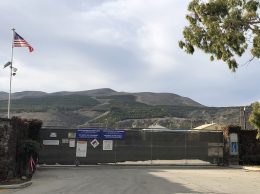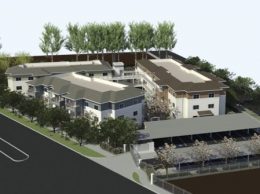Our view: Reliable electricity a must for Highway 101 corridor
IN THIS ARTICLE
- Editorials Topic
- Editorial board and Henry Dubroff Author
By Editorial board and Henry Dubroff Friday, June 16th, 2017
Southern California Edison work crews have been tearing up streets in and around Santa Barbara, finally delivering on a promise to provide more stable electric power to part of the region that’s been ignored for decades.
The disruptions and occasional power outages — at the Business Times’s offices on Carrillo Street they always happen on deadline — are going to lead to a more efficient, flexible power grid up and down the Central Coast.
Which brings us to the question of the future of NRG’s proposed natural gas peaker plant for Oxnard’s Mandalay Bay. Faced with falling demand for electricity statewide and opposition from environmentalists and social justice advocates, California’s Independent System Operator has offered to conduct a study to determine if battery storage would be an acceptable alternative to the proposed gas turbine facility.
The California Energy Commission, which has been reviewing the proposal, has agreed to the study which should be completed next month. We’ve long argued in favor of the peaker plant from a different perspective — we see an urgent need for reliable electricity in the Goleta to Moorpark area to enable tech firms and traditional companies to grow and produce head-of-household jobs.
Having waited since the administration of former President Herbert Hoover — we are not joking — for Edison to upgrade certain parts of the grid in the Highway 101 corridor, we’re certainly willing to wait until mid to late July for the results of the ISO survey about whether advances in battery technology mean that an array of storage units could replace the proposed peaker plant.
If we had to hazard a guess, we’d speculate that the battery solution will only work if there is a distributed system for storage that includes a plant in Goleta and perhaps elsewhere to provide back up power in the case of a major outage. We’d also speculate that the improvements to the grid taking place above and below ground on the South Coast are going provide efficiencies that reduce demand on peak days.
California’s thirst for electric power peaked in the pre-recession days of the housing boom, and thanks to LED lighting, improved efficiencies and better grid management, we’ve not gotten closer to the earlier peak.
We’ll be waiting for the results of the ISO study with great interest but we’d urge the ISO and California Energy Commission to act quickly once the study is over.
PROTECT PUBLIC LAND
Earlier this spring, the Trump administration put the Carrizo Plain National Monument on a list of 27 national monuments where the Interior Department has asked for public comment about proposed changes to their protected status.
The review extends to six monuments in California and 17 in the West. A number of companies, including Ventura-based Patagonia, have weighed in in favor of protecting these treasured locations.
On the Carrizo Plain, the only one that’s within our tri-county footprint, we certainly agree. San Luis Obispo County has thoughtfully approved the development of 800 megawatts of solar fields on private land around the monument, making the area a poster child for smart growth when it comes to power generation.
The area is largely lacking in infrastructure to support oil-and-gas development which, given low prices and relatively high risks, doesn’t appear to be a viable alternative.
We’re inclined in general to think that land that’s been set aside for the public should remain that way.
We’d encourage our readers to express their own views prior to the July 10 deadline at www.regulations.gov.
Related Articles
 Friday, October 14th, 2022
Friday, October 14th, 2022











